How to Get Rid of Cockroaches in Durham Region
Do you need a cockroach exterminator? Find a professional cockroach exterminator for affordable rate in Bowmanville, Oshawa, Whitby, Cobourg and Durham region. ZOLO Pest Control Inc serves in Durham region and all surrounding areas.
Cockroaches are one of the most common pests infesting homes, apartments restaurants in Canada. They are especially troublesome where food is prepared and sanitation is lacking. Cockroaches are repulsive and embarrassing to most people simply by their presence. They may contaminate food, kitchen utensils, and other household items, and they leave an unpleasant odor.
Lot of people are also allergic to cockroach excrement and their shed skins. Cockroaches move freely from filth to food. They can transfer pathogenic microbes that cause food poisoning and other illnesses. Cockroach-produced allergens may cause congestion, sneezing and watery eyes, as well as life-threatening bronchial inflammation (asthma) characterized by recurrent cough, wheezing, and difficulty breathing. Asthma triggered by cockroaches is especially common among children living in densely populated housing conditions where infestations are often severe.
How do cockroaches enter to your home?
Cockroaches enter home in a variety of ways. The ubiquitous German cockroach is often introduced in infested grocery bags, beverage cartons, or furniture. Species such as the American, Oriental, and wood cockroach also gain entry through gaps around windows, doors, vents, and utility openings, and in firewood. In multi-unit dwellings such as apartments, cockroaches also travel between units through common walls, ceilings, pipes etc. Consequently, while roaches usually thrive where sanitation is poor, even clean homes can become infested.
What do cockroaches look like?
Cockroaches are flattened, brownish, fast-running insects, with long, slender antennae. There are three life stages: egg, nymph, and adult. The female cockroach produces small, brown, bean-shaped egg cases that are deposited in out-of-the-way places. Several nymphs emerge from each egg case (up to 40 with the German cockroach, 15-20 with other varieties). The nymphs resemble adults except that they are smaller and lack wings. The nymphs gradually become larger and inhabit the same places as the adults. Cockroaches are prolific breeders. Species such as the German cockroach are capable of producing several thousand offspring in less than a year.
Do cockroaches live in a colony?
Cockroaches do not live in centralized nests or colonies like ants, bees, and termites. However, cockroaches do congregate in distinct areas, in response to aggregating odors in their feces. The droppings appear as pepper-like specks in areas of current or former activity. The spotting is similar in appearance to that of bed bugs, but can usually be distinguished by location, or by other signs of infestation.
What time cockroaches most active?
Cockroaches are more active at night than during the daytime. During the day, they generally remain hidden in cracks and other dark, secluded areas. At night, they leave their hiding places and search for food. Cockroaches will eat all human foods, plus many other items such as soap, toothpaste, glue, hair, excrement, and filth.
Where do cockroaches hide?
In order to eliminate cockroaches, it helps to know where they are hiding. Preferred locations include warm, dark, moist areas, especially in kitchens and bathrooms. However, depending on the species and extent of infestation, cockroaches may be found anywhere in the home
How long do cockroaches survive without food?
Cockroaches are cold-blooded insects that are common pests in households across the world. They are known to be extremely hardy and adaptable critters, so you probably won’t be surprised to learn that cockroaches can often live for up to a month without food.
Types of Cockroaches
There are 69 species of cockroaches in North America, but only a handful infest structures. Knowing which type of cockroach is present will assist you in knowing how to proceed.
German Cockroach
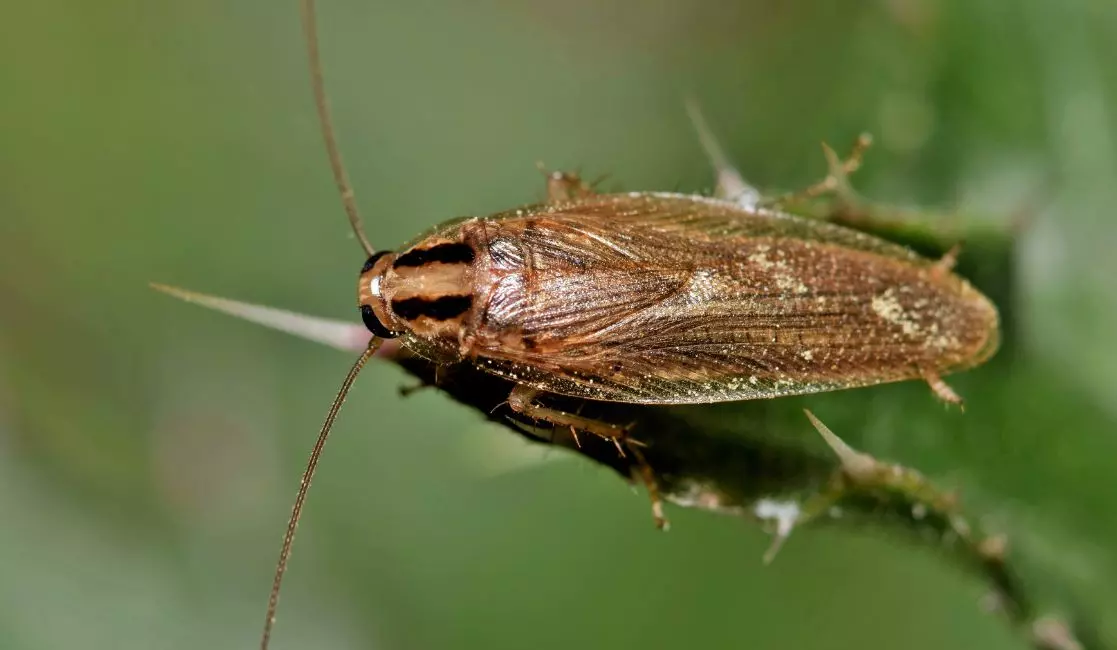
This is by far the most common cockroach infesting homes and buildings. The pest thrives in the presence of humans but does not occur outdoors. Adults are light brown and about 1/2 inch long, with two dark stripes running lengthwise along the shield-like area behind the head. The nymphs are smaller and darker with a tan stripe down the middle of the back. German cockroaches reproduce very rapidly, which is one reason why controlling these pests can be difficult. A single mated female can produce thousands of new cockroaches in less than a year.
American Cockroach
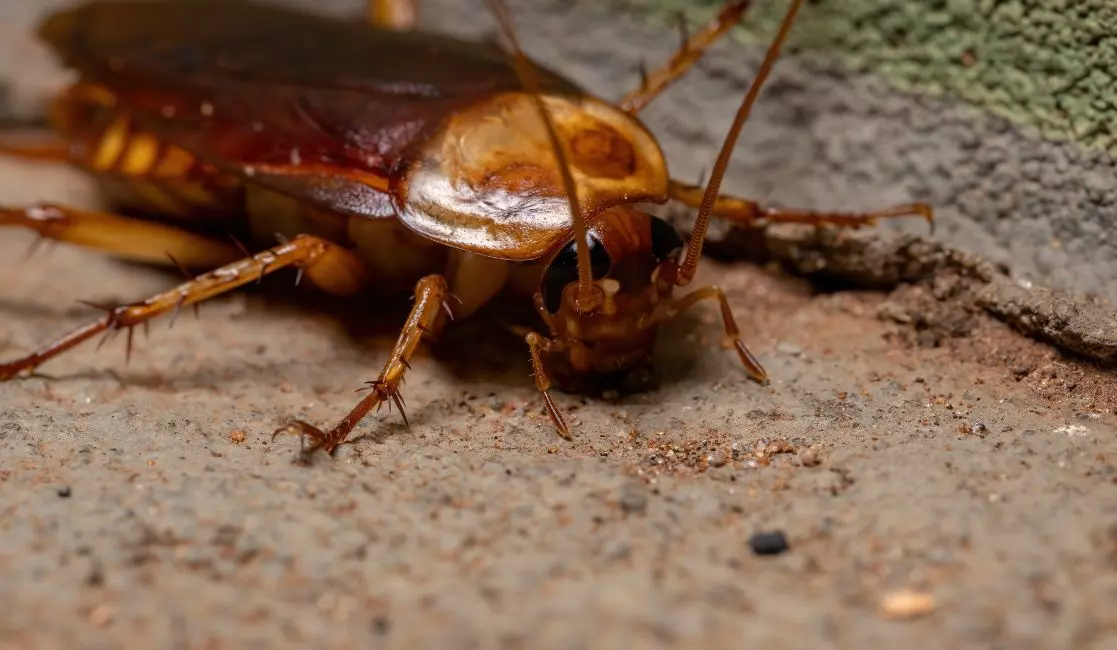
This is the largest cockroach commonly found within dwellings, measuring about 1 1/2 inches long when fully grown. It is reddish brown to brown, with a pale-yellow band around the edge of the area behind the head. Adults have well-developed wings, but seldom fly. The nymphs are smaller and lack wings, but are otherwise similar in appearance. American cockroaches multiply more slowly than German cockroaches (although the smaller numbers tend to be offset by their size).
Oriental Cockroach - Blattidae
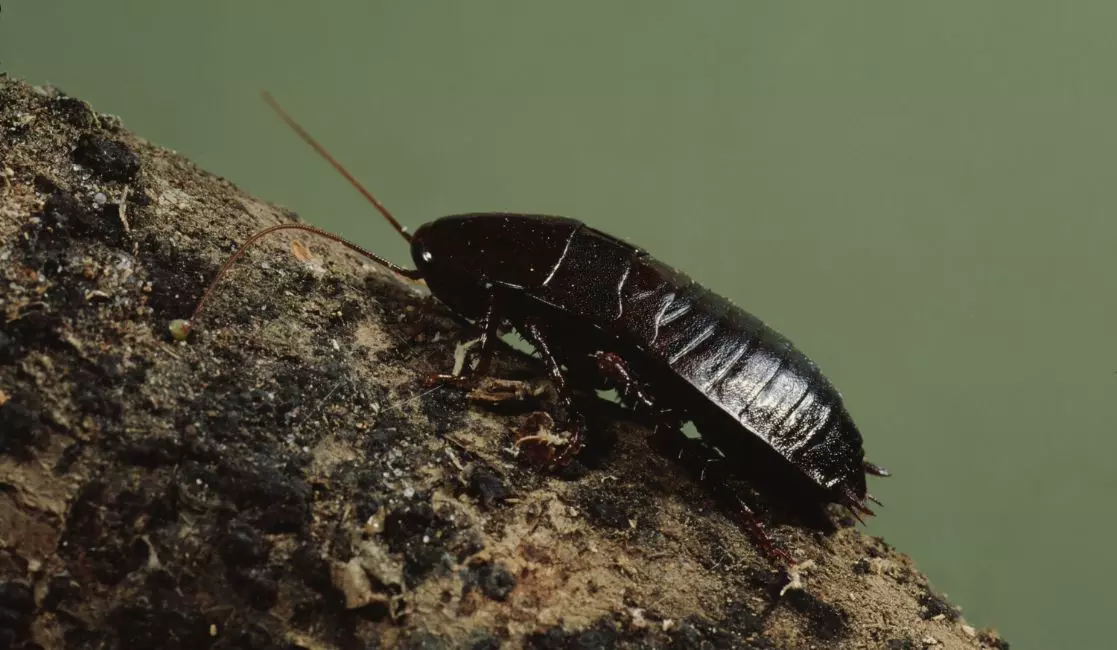
The oriental cockroach is shiny black or dark brown, and the adult is about 1 inch long. The females have very short wings, and the males have wings that cover about half the abdomen. This cockroach typically infests cool, dark, damp places such as sewers, crawlspaces, cellars, and basements. The nymphs and adults are relatively sluggish and usually occur at ground level, often living in floor drains and sump pumps. They also live outdoors under stones, debris, and plant litter, gaining entry into buildings via door thresholds, vents, and other openings. Oriental cockroaches are considered especially filthy because they often feed on garbage, human/animal waste, and decaying organic matter.
Brown-banded Cockroach
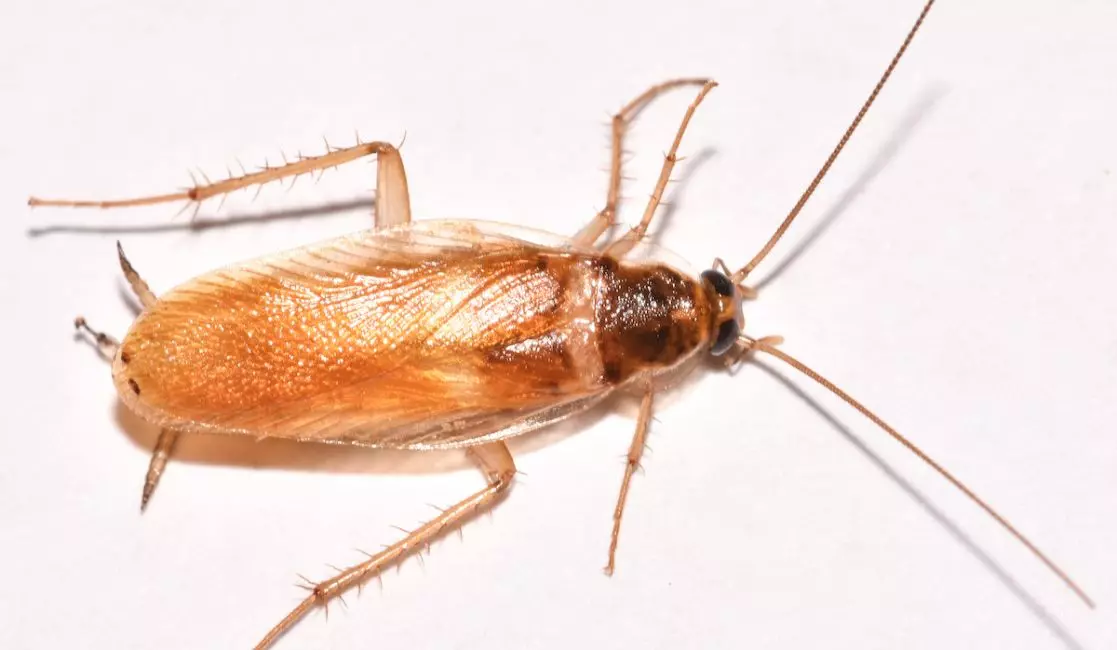
This species is far less common than the German cockroach, but occasionally can be a problem in homes. Correct identification is important because it has markedly different hiding places and habits. The brownbanded cockroach is similar in size to the German cockroach, but lacks the dark lengthwise stripes on the region behind the head. Instead, there is a black bell-shaped pattern behind the head and two transverse yellowish bands across the wings.Brown-banded cockroaches can be found anywhere in the home and are often found in rooms other than kitchens and bathrooms.
Wood Cockroaches
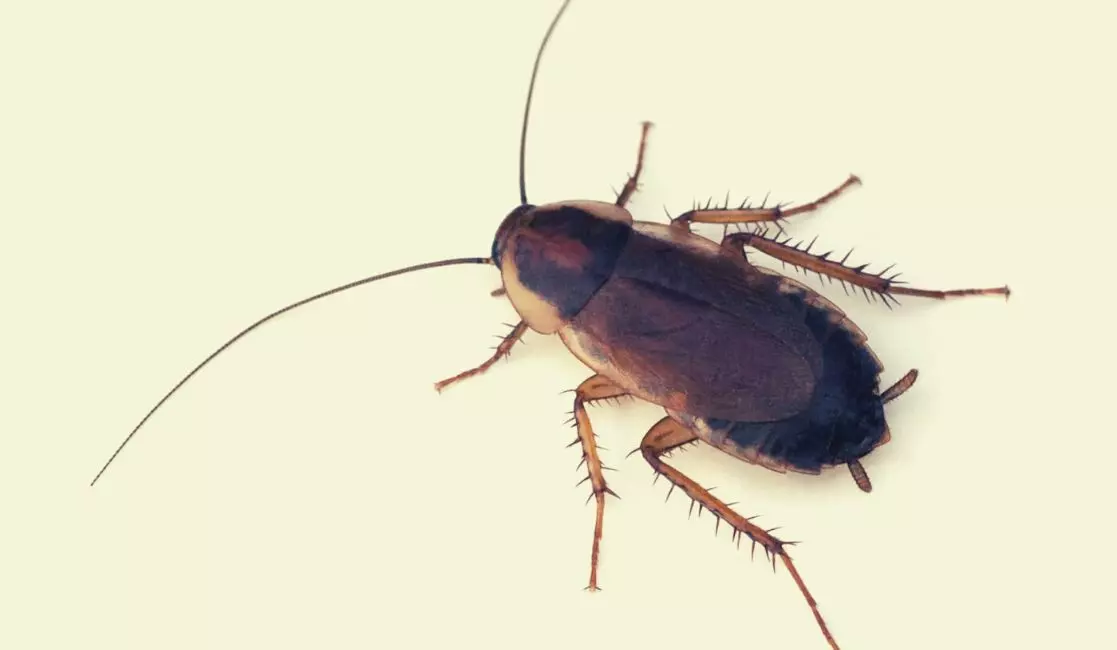
Although the usual habitat for these cockroaches is outdoors, they often appear in homes, especially in wooded settings. The adults are about 1 inch long and all stages are brownish in color. In some species, the outer wing margin of the adults is edged in white. Unlike the other cockroaches mentioned, male wood cockroaches are excellent fliers, and both sexes are attracted to lights. These are primarily outdoor cockroaches, living beneath loose bark in woodpiles, fallen logs, and dead trees. They cannot survive indoors, but can be an annoyance during the spring and summer when large numbers wander in from outside. They are also brought into homes during winter in firewood.
How do exterminators get rid of cockroaches?
Cockroaches are best controlled using a combination of techniques. Since roaches' flourish where food, moisture, and shelter are readily available, cleanliness is an important step in preventing and correcting problems. Spills and food waste should be cleaned up, and unwashed dishes, utensils, and pet food should not be allowed to sit overnight. Loose food should be stored in tight-fitting containers. Garbage should not be allowed to accumulate, and stacks of paper bags, cartons, and newspapers should be discarded or stored in sealed plastic bags.
Outdoor species such as wood cockroaches can be discouraged from entering buildings by installing tight-fitting screens on windows and sweeps beneath doors. Cracks and openings around doors and windows should be caulked. It is also prudent to seal openings where plumbing pipes or wires pass through walls or floors with caulk, foam, or copper mesh. This is especially useful in apartments to reduce migration of cockroaches between adjoining units.
Insecticide Treatment
Although good housekeeping is helpful, insecticides are usually necessary to eliminate infestations, especially of German cockroaches, which are highly prolific. Cockroaches spend little time out in the open; places that are hard to see and reach where they tend to be. Dark, secluded areas near food, warmth, and moisture are preferred so a bright flashlight helps when performing inspections. Emphasis should be on finding and treating preferred harborage locations, rather than randomly spraying baseboards, countertops and other exposed surfaces. If key harborage areas are missing problems are likely to continue.
Sprays Treatments
When using sprays, target the areas where cockroaches prefer to hide. Be sure to spray any aggregations or areas with fecal spotting. Avoid spraying walls, floors, baseboards and countertops since cockroaches spend very little time in these areas
Dusts Treatments
A few insecticides used for cockroach control are applied as dusts or powders. Most familiar to householders are boric acid and diatomaceous earth. For controlling cockroaches, boric acid tends to be more effective. Roaches succumb to boric acid after crawling over treated surfaces. The tiny particles of powder adhere to the insect’s body, and are ingested as the cockroach preens them from its legs and antennae. Never apply boric acid onto countertops or other exposed surfaces, especially those used to prepare food. Traces of powder should be wiped off with a damp cloth. Boric acid should not be injected into electronic equipment as the dust could damage the components. Any pesticide should be applied by a licensed trained professional.
Baits Treatment
Most householders will achieve better results against cockroaches with insecticides formulated as baits. Cockroach baits contain a slow-acting insecticide combined with a food attractant. Pests find and ingest the bait and crawl away to die. Non-exposed roaches may succumb as well after indirectly ingesting trace amounts of toxicant expelled in the sputum and feces of exposed individuals. The key to success with baits is proper placement. Treatment sites for German cockroaches include under/around sinks and toilets; behind refrigerators, dishwashers, and stoves; near trash containers; and inside cabinets and storage areas. When using the plastic-style bait stations, it is important to place them flush against corners and edges of cabinets, countertops, etc.
Finding a cockroach exterminator
The ZOLO Pest Control technician will perform a thorough inspection on each service visit. When insecticides are used, we will apply into cracks and secluded areas where cockroaches are likely to be living, rather than along baseboards other exposed surfaces. Many of the insecticide's our professionals use to control cockroaches remain effective for months. Once an infestation is eliminated, there is seldom a need to reapply them month after month in order to maintain control.






